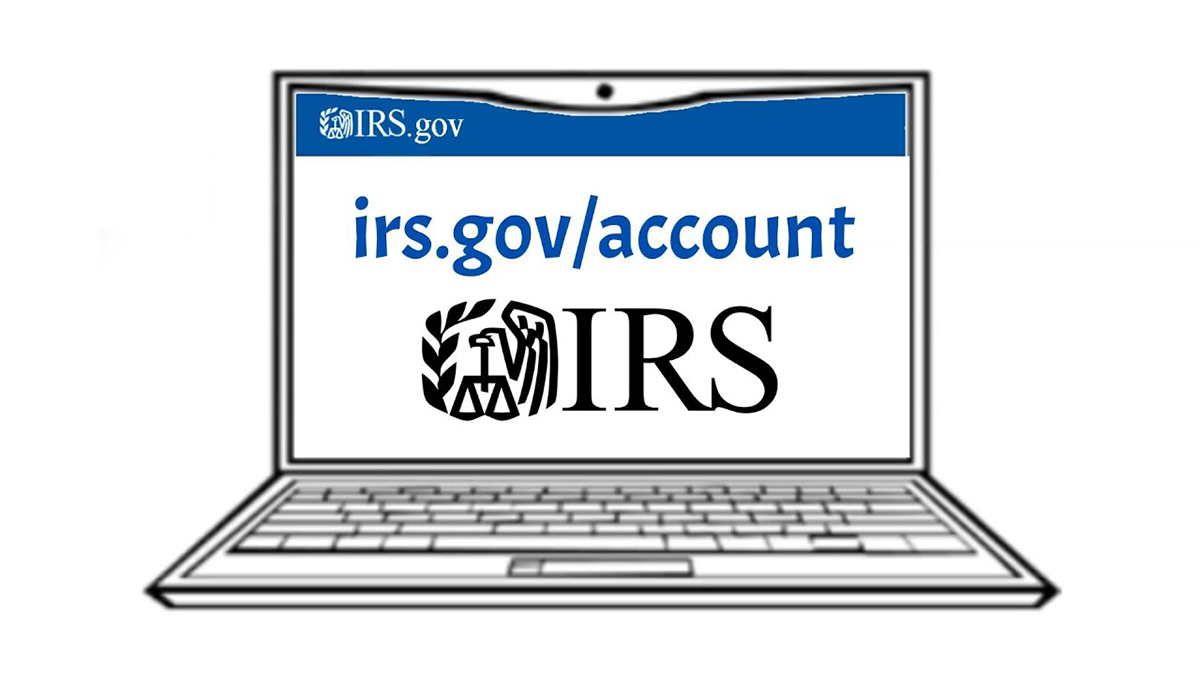

Finance
How Do I Amend My State Tax Return
Modified: February 21, 2024
Learn how to amend your state tax return with our step-by-step guide. Get expert advice and tips on finance and ensure you file your taxes correctly.
(Many of the links in this article redirect to a specific reviewed product. Your purchase of these products through affiliate links helps to generate commission for LiveWell, at no extra cost. Learn more)
Table of Contents
- Introduction
- Reasons for amending a state tax return
- When to amend a state tax return
- Gathering necessary documentation
- Steps to amend a state tax return
- Filing an amended state tax return
- Checking the status of an amended state tax return
- Avoiding common mistakes when amending a state tax return
- Conclusion
Introduction
Welcome to our comprehensive guide on amending your state tax return. Tax filing can be a complex process, and sometimes mistakes or oversights occur. However, there is no need to panic if you discover an error on your state tax return after you have already filed it. Most states provide a process for taxpayers to amend their state tax returns to correct any errors or omissions.
Amending your state tax return allows you to make changes to your original submission and ensure that your tax liability is accurate based on the revised information. Whether you need to report additional income, claim additional deductions, or correct any errors, this guide will walk you through the steps to amend your state tax return with ease.
While the prospect of amending your state tax return may seem intimidating, it is important to remember that many taxpayers find themselves in this situation every year. The good news is that with a little bit of know-how and careful attention to detail, you can successfully make the necessary corrections and achieve peace of mind regarding your state tax obligations.
In the following sections, we will explain the reasons for amending a state tax return, outline the process to amend your state tax return, and provide helpful tips to avoid common mistakes. By the end of this guide, you will have a clear understanding of how to navigate the state tax amendment process and ensure that your tax return accurately reflects your financial information.
Reasons for amending a state tax return
There are several common reasons why you may need to amend your state tax return. Understanding these reasons can help you identify when it is necessary to make changes to your tax filing. Here are some of the most common reasons for amending a state tax return:
- Correction of errors: It’s possible that you made a mistake on your original state tax return, such as entering incorrect information or forgetting to include certain deductions or credits. By amending your state tax return, you can correct these errors and ensure that your tax liability is accurately reported.
- Changes to your federal tax return: If you made changes to your federal tax return after filing your state tax return, you will likely need to amend your state tax return as well. This is because many states use information from the federal return to calculate state taxes, so any changes made at the federal level can impact your state tax liability.
- Reporting additional income: If you receive additional income after filing your state tax return, such as a bonus, rental income, or investment income, you will need to amend your state tax return to include this additional income. Failure to report all sources of income can result in penalties and interest.
- Claiming additional deductions or credits: Discovering additional deductions or credits that you qualify for after filing your state tax return can make a significant difference in your tax liability. Whether it’s a missed deduction or a tax credit you were unaware of, amending your state tax return allows you to claim these additional benefits.
- Changes in residency or filing status: If you moved to a different state or experienced a change in your filing status (e.g., got married, divorced, or had a dependent), you may need to amend your state tax return to reflect these changes. Different states have different tax laws and filing requirements, so it’s crucial to update your state tax return accordingly.
It’s important to note that not all changes require amending your state tax return. Minor typos in your address or social security number, for example, can often be corrected by contacting the relevant state tax agency directly without filing an amendment. However, for more substantial changes, such as those listed above, amending your state tax return is typically the appropriate course of action.
Now that you understand the reasons behind amending a state tax return, let’s proceed to the next section and explore when it is necessary to take this step.
When to amend a state tax return
Knowing when to amend your state tax return is crucial to ensure compliance with state tax laws and avoid any potential penalties or consequences. While certain situations may automatically trigger the need for an amendment, there are also instances where it’s up to your discretion. Here are some common scenarios that may warrant amending your state tax return:
- Correction of errors: If you discover errors, omissions, or inaccuracies on your original state tax return, it is important to amend as soon as possible. This includes situations where you entered incorrect information, forgot to include certain deductions or credits, or made mathematical errors. Filing an amendment allows you to correct these mistakes and ensure the accuracy of your tax liability.
- Changes to your federal tax return: If you made changes to your federal tax return that affect your state tax liability, you will likely need to amend your state tax return as well. This can occur if you need to adjust your income, deductions, or credits at the federal level, which then impacts your state tax liability. It’s crucial to review any changes to your federal return and assess their impact on your state taxes.
- Reporting additional income: If you received additional income after filing your state tax return, it is necessary to amend your state tax return. This includes income from sources such as side jobs, freelance work, or investments that you failed to report initially. Failing to report additional income can result in penalties and interest payments, so it’s essential to amend your state tax return promptly.
- Claiming additional deductions or credits: Discovering missed deductions or credits that you qualify for after filing your state tax return can make a significant difference in your tax liability. Whether it’s a deduction for a charitable contribution or a credit for education expenses, filing an amendment allows you to claim these additional benefits. Be sure to gather all relevant documentation to support your claim.
- Changes in residency or filing status: If you experienced a change in your residency or filing status, it may be necessary to amend your state tax return. This can occur if you moved to a different state or if there were changes in your marital status, dependents, or other circumstances that affect your filing status. Different states have different tax laws and requirements, so it’s important to review the guidelines for your specific situation.
In some cases, the decision to amend your state tax return may be subjective. For example, if you discover a minor error or omission that has little impact on your overall tax liability, you may choose to forgo amending. However, it’s always best to err on the side of caution and consult with a tax professional to ensure compliance with state tax laws and to make informed decisions regarding whether or not to file an amendment.
Now that you know when to amend your state tax return, let’s move on to the next section, where we will discuss the necessary documentation to gather for the amendment process.
Gathering necessary documentation
When it comes to amending your state tax return, it’s important to gather all the necessary documentation to support the changes you are making. Having the right documentation not only ensures the accuracy of your amended return but also provides evidence in case of an audit or review by the state tax authorities. Here are some essential documents you may need when amending your state tax return:
- Original state tax return: Start by gathering a copy of your original state tax return. This will serve as a reference point and help you identify the specific changes you need to make.
- IRS tax return: If you made changes to your federal tax return that impact your state tax liability, you will need to have a copy of your amended federal tax return (Form 1040X) as well. It’s important to ensure that your state tax return is consistent with your amended federal return.
- Supporting documents for income: If you are reporting additional income on your amended state tax return, gather all relevant documents such as W-2s, 1099s, or any other income statements. This includes any income received after filing your original return.
- Supporting documents for deductions and credits: If you are claiming additional deductions or credits, gather all supporting documents such as receipts, invoices, statements, or any other documentation that proves your eligibility.
- State-specific forms and schedules: Each state may have specific forms or schedules that need to be completed when amending your state tax return. Visit your state’s tax website or consult with a tax professional to ensure you have the appropriate forms for your amendment.
- Explanation letter: It’s advisable to include an explanation letter with your amended state tax return. This letter should clearly outline the changes you are making and the reasons for those changes. Providing a detailed explanation can help state tax authorities understand the purpose of your amendment.
- Amended state tax return form: Obtain and fill out the appropriate amended state tax return form. This form, usually labeled as “Amended Return” or “X Form,” allows you to modify your original state tax return and include the necessary changes.
- Other supporting documents: Depending on your specific circumstances, you may need additional documents such as proof of residency, marriage certificates, divorce decrees, or birth certificates. Consult with a tax professional or review your state’s guidelines to determine if any additional documentation is required.
Organizing and keeping track of all these documents is crucial to ensure a smooth amendment process. It’s best to create a dedicated folder or file where you can store all the documents related to your state tax amendment. This will help you easily access and reference the necessary information while preparing and filing your amended return.
Now that you have gathered all the necessary documentation, you are ready to proceed to the next section, where we will outline the steps to amend your state tax return.
Steps to amend a state tax return
Amending your state tax return may sound like a daunting task, but with proper guidance, it can be a straightforward process. Follow these steps to ensure that you successfully amend your state tax return:
- Obtain the necessary forms: Visit your state’s tax website or contact the appropriate tax agency to obtain the amended state tax return form. Most states have specific forms designated for amending tax returns, often referred to as “Amended Return” or “X Form.”
- Fill out the amended state tax return: Using the obtained forms, carefully complete the necessary sections with the updated and corrected information. Pay close attention to the instructions provided on the form to ensure accuracy.
- Include an explanation letter: Along with your amended state tax return, include an explanation letter that outlines the changes you are making and the reason for those changes. Clearly and concisely explain the incorrect or omitted information on your original return.
- Attach supporting documents: Assemble all the supporting documents that validate the changes you are making on your amended state tax return. This includes any additional income, deductions, or credits that you are reporting. Make copies of these documents and attach them securely to your amended return.
- Double-check your work: Before submitting your amended state tax return, review all the information, calculations, and supporting documents for accuracy. Ensure that all required sections are completed, signed, and dated correctly.
- Submit your amended return: Once you are confident in the accuracy of your amended state tax return, send it to the appropriate address as indicated on the form. Be sure to keep a copy of the amended return and all supporting documents for your records.
- Monitor the status of your amendment: After submitting your amended state tax return, it’s a good idea to monitor the status of your amendment. Check your state’s tax website or contact the tax agency to track the progress of your amended return and ensure that it has been received and processed.
- Address any additional requests: If the state tax agency requires any additional information or documentation, respond promptly and provide the requested materials. Failure to comply with these requests may delay the processing of your amendment.
- Keep records for future reference: It’s important to retain copies of your amended state tax return, supporting documents, and any correspondence with the state tax agency. These records will be valuable in case of any questions or audits in the future.
Remember, each state may have slight variations in the amendment process. It’s always a good idea to consult your state’s tax website or seek guidance from a tax professional to ensure compliance with the specific requirements of your state.
Now that you know the steps involved in amending your state tax return, let’s move on to the next section, where we will discuss the process of filing an amended state tax return.
Filing an amended state tax return
After completing the necessary steps to amend your state tax return, the next crucial task is filing the amended return with the appropriate tax authorities. The process of filing an amended state tax return typically involves the following steps:
- Prepare the amended return: Make sure you have completed all the required fields on the amended state tax return form, including the corrected information and any supporting documentation. Review the amended return carefully to ensure accuracy.
- Include an explanation letter: Along with the amended return, include a detailed explanation letter that clearly outlines the changes made and the reasons for those changes. The letter can help the tax authorities understand the purpose of your amendment and can serve as additional documentation.
- Attach supporting documents: Assemble and attach all necessary supporting documents, such as income statements, deduction receipts, or other relevant paperwork. Ensure that the documents are securely attached and easily comprehensible.
- Make copies of all documents: Before submitting, make copies of the completed amended return, the explanation letter, and all supporting documents. These copies will serve as your records, providing evidence of your filing and the changes made.
- Submit the amended return: Mail the original amended state tax return, along with the explanation letter and supporting documents, to the appropriate address specified by your state’s tax agency. It is recommended to use certified mail or a reputable delivery service to have proof of your filing.
- Keep copies and track delivery: Retain copies of everything you submitted, including the amended return, explanation letter, and supporting documents. Keep track of the delivery status, such as a receipt or tracking number, to ensure that your amended return reaches the tax agency.
- Check for updates: Keep an eye on your state’s tax website or contact the tax agency to check the status of your amended return. They may provide updates on the processing of your amendment, any additional documentation required, or any potential delays.
- Address any requests for additional information: If the tax agency requests more information or documents related to your amended return, respond promptly and provide the requested materials. Timely response can help expedite the processing of your amendment.
- Maintain records: Once your amended return has been processed, keep copies of all correspondence, including any notifications or confirmations from the tax agency. These records will serve as evidence of your amended filing and may be valuable in case of future inquiries or audits.
It is important to note that the processing time for an amended state tax return may vary depending on the state and the complexity of the changes being made. It is advisable to check your state’s tax website or contact the tax agency for specific information regarding the processing time and any additional guidelines.
Now that you are familiar with the process of filing an amended state tax return, let’s move on to the next section, where we will discuss how to check the status of your amended state tax return.
Checking the status of an amended state tax return
After submitting your amended state tax return, you may be eager to know its status and ensure that it is being processed by the tax agency. Here are some steps you can take to check the status of your amended state tax return:
- Visit the state tax website: Many state tax agencies provide online resources where you can check the status of your amended return. Visit the official website of your state’s tax agency and look for a section or portal dedicated to tracking amended returns.
- Enter the required information: Once you locate the tracking section, you will typically be asked to provide certain information for verification purposes. This may include your Social Security number, the tax year of your amended return, and the confirmation or tracking number if available.
- Follow the instructions: Follow the instructions provided on the website to access the status of your amended return. This may involve filling out an online form, using a specific tracking tool, or navigating through a series of prompts to retrieve your information.
- Check for updates or notifications: Once you access the status of your amended return, you might see information regarding its progress. The tax agency may provide updates on whether it has received your amended return, if it is being reviewed, or if any additional documents or information are required.
- Contact the tax agency: If you are unable to find information about your amended return online, or if you have specific questions or concerns, don’t hesitate to contact the state tax agency directly. They can provide more detailed information about the status of your amendment and answer any inquiries you may have.
- Document your interactions: During your communication with the tax agency, keep a record of any correspondence, including the date, time, and details of your conversation. This documentation can be helpful for future reference or in case of any discrepancies or issues that may arise.
- Be patient: The processing time for amended state tax returns varies depending on the state and the specific circumstances. It is important to remember that reviewing and processing amended returns may take longer than regular tax returns. If there are no updates or notifications, it may indicate that your return is still being processed, and patience is required.
Checking the status of your amended state tax return allows you to stay informed about its progress and ensures that you are aware of any additional requirements or actions needed on your part. It is crucial to follow up if you encounter any significant delays or if you have concerns about the processing of your amended return.
Now that you know how to check the status of your amended state tax return, let’s move on to the next section, where we will discuss some common mistakes to avoid when amending a state tax return.
Avoiding common mistakes when amending a state tax return
When it comes to amending a state tax return, it’s important to exercise caution and attention to detail to avoid potential mistakes that can delay the processing of your amendment or lead to further complications. Here are some common mistakes to avoid when amending a state tax return:
- Not using the correct amended return form: Each state has specific forms designated for amending tax returns. Make sure to use the correct form for your state and year of filing. Using an incorrect form may result in delays or improper processing of your amendment.
- Omitting required documentation: Failing to include supporting documents or not providing sufficient evidence for the changes you are making can lead to challenges during the review process. Ensure that you attach all necessary documentation to substantiate the corrections or additions made to your amended return.
- Incomplete or inaccurate information: Take your time to fill out the amended return form accurately and provide all the required information. Incomplete or inconsistent information may lead to confusion or further inquiries from the tax agency.
- Misunderstanding state-specific guidelines: Each state may have specific guidelines concerning the types of amendments, deadlines, and supporting documentation required. Familiarize yourself with your state’s guidelines to ensure you comply with all the requirements when amending your state tax return.
- Ignoring the explanation letter: The explanation letter you include with your amended return serves as a crucial document to communicate the changes made and the reasons behind them. Provide a clear and concise explanation to help the tax agency understand the purpose of your amendment.
- Missing deadlines: Each state has specific deadlines for filing an amended return. Failing to meet these deadlines may result in penalties or the rejection of your amendment. Be aware of the deadlines and make sure to submit your amended return in a timely manner.
- Forgetting to sign and date: Don’t forget to sign and date your amended return. Just like a regular tax return, your amended return requires your signature to be considered valid. Failure to sign and date your amendment may result in processing delays.
- Not keeping copies of documents: It is essential to keep copies of your amended return, the explanation letter, supporting documents, and any correspondence with the tax agency. These copies serve as important records and can help you address any future inquiries or audits.
- Not following up: Once you have filed your amended return, it’s important to periodically check the status of your amendment and respond promptly to any requests or inquiries from the tax agency. Ignoring or failing to respond may lead to delays or complications in processing your amendment.
Avoiding these common mistakes can help ensure a smoother process when amending your state tax return. However, it’s always advisable to consult with a qualified tax professional or utilize the resources provided by your state’s tax agency to ensure compliance with all the necessary requirements and guidelines.
Now that you have learned about common mistakes to avoid, let’s wrap up this guide in the next section.
Conclusion
Amending your state tax return may seem like a daunting task, but with the right information and guidance, it can be a manageable process. This comprehensive guide has provided you with the knowledge and steps necessary to successfully amend your state tax return and ensure compliance with state tax laws.
We discussed the reasons for amending a state tax return, such as correcting errors, reporting additional income, claiming missed deductions or credits, and addressing changes in residency or filing status. It is essential to understand these reasons to determine when it is necessary to amend your state tax return.
We also covered the important steps involved in amending a state tax return, including gathering the necessary supporting documents, properly filling out the amended return form, and submitting the amendment to the appropriate tax agency. Taking these steps diligently can help you avoid mistakes and ensure the accuracy of your amended state tax return.
Additionally, we discussed the process of checking the status of your amended state tax return, emphasizing the importance of staying informed and following up with the tax agency if needed. By monitoring the progress of your amendment, you can address any issues or requests promptly, allowing for a smoother processing experience.
Lastly, we highlighted common mistakes to avoid when amending a state tax return, such as using the wrong form, omitting required documentation, and missing important deadlines. By being aware of these pitfalls and taking precautions, you can minimize delays and obstacles in the amendment process.
Remember, every state may have specific requirements and procedures for amending tax returns. It is advisable to consult your state’s tax website or seek assistance from a tax professional to ensure you adhere to the guidelines specific to your state.
Amending your state tax return serves as an important step towards ensuring accurate tax reporting and maintaining compliance with state tax laws. With the knowledge gained from this guide, you are now equipped to confidently navigate the process of amending your state tax return and achieve peace of mind regarding your tax obligations.














